Not really, but last night the temperature dropped more than it had in weeks, coupled with high humidity, and dew formed with a vengeance, which we also hadn’t seen in weeks – it doesn’t often hit the dewpoint overnight in summer here. And so, there were a couple of subjects to be found because of this.
The Girlfriend and I had seen this eastern carpenter bee (Xylocopa virginica) already snoozing on the butterfly bush at dusk, but the dew hadn’t begun forming then. It was a much better subject with that addition.
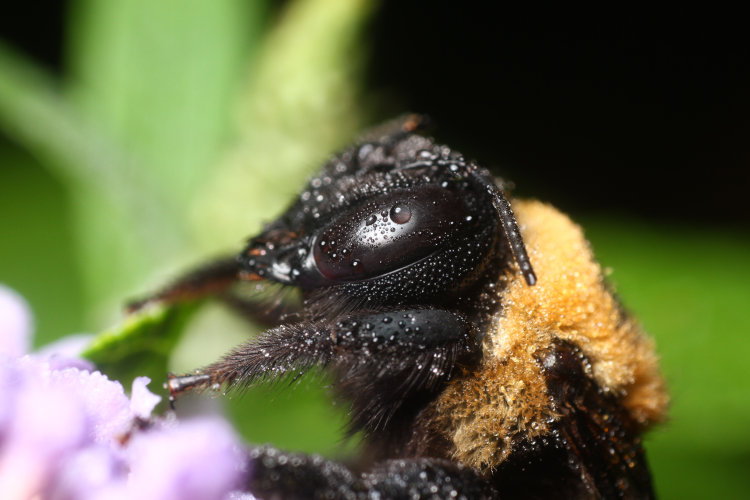
… which is all well and good, but we need a closer look at that eye:
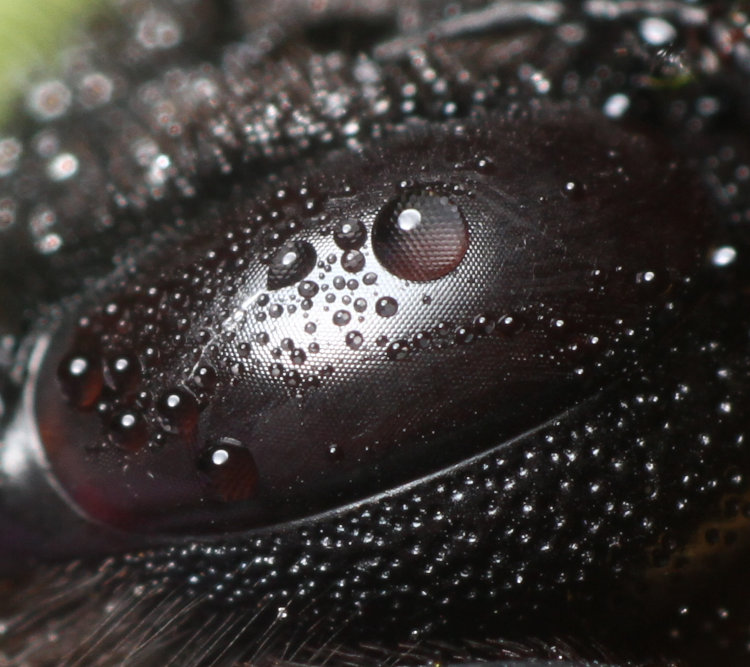
It took several tries to get the light angle right, so that both the facets of the ommatidia and the magnification of them in the dewdrop came out clearly. This was with the reversed Mamiya 45mm medium-format lens, which I hadn’t used in years in this manner and dug back out recently to experiment. Worked pretty well.
And another subject in much the same manner. First, I repost the image for scale taken a few days back, of the newborn Carolina anole (Anolis carolinensis.)
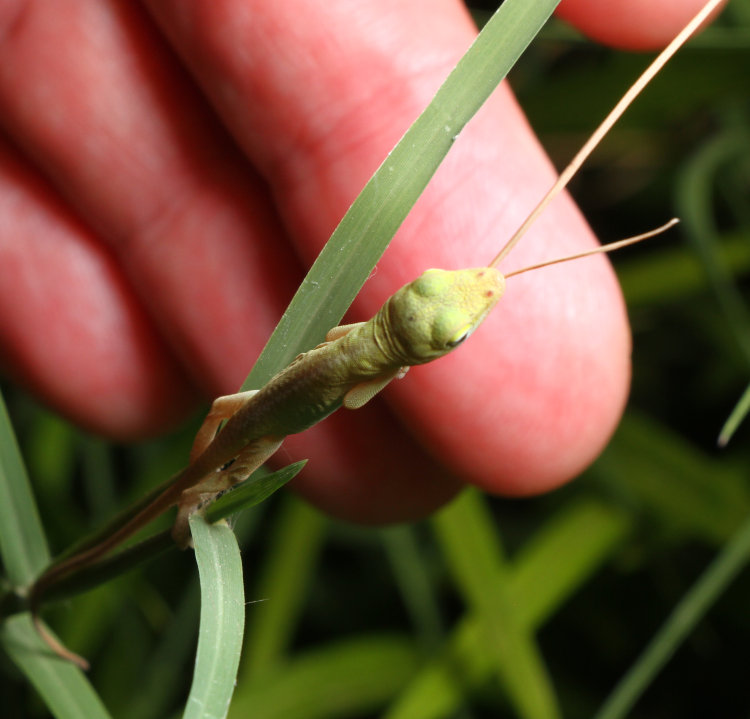
Because I found this same specimen again, only a short distance away from that location, this time asleep on the liriope.
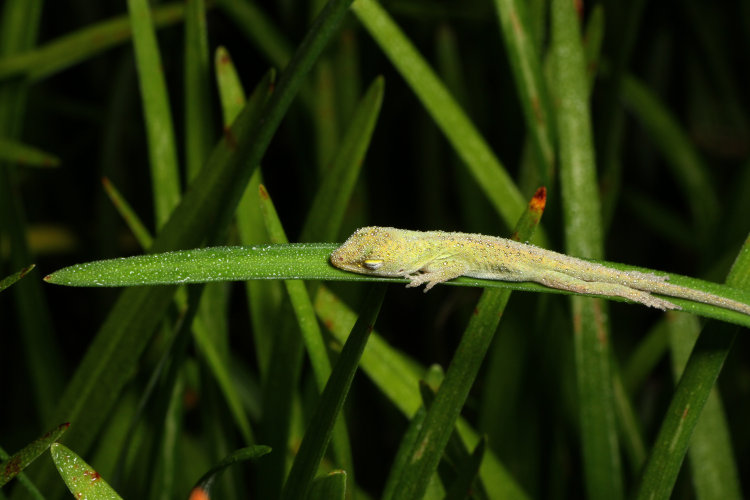
Naaahhh, that’s boring – let’s go in closer and more of a portrait angle:
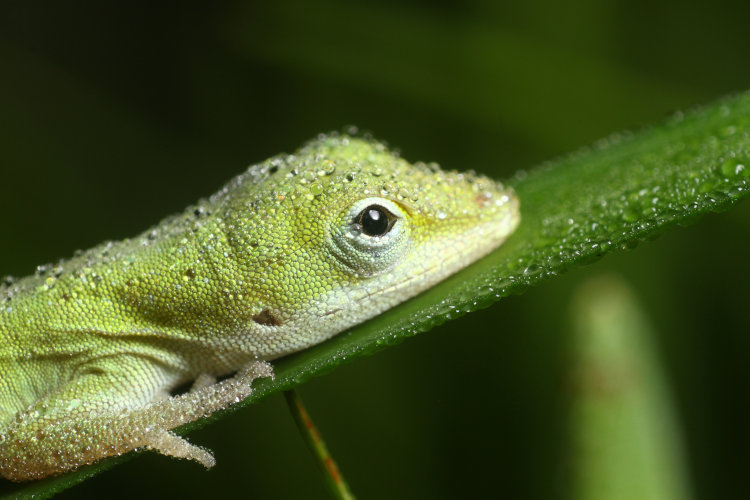
Despite endeavoring to keep things still and quiet, the anole awoke and was watching the headlamp beam bobbing around with a small amount of concern, yet it remained motionless except for its eyes. With a reversed wide-angle lens, the range of sharp focus is quite short, and so I took a series of images to ensure that at least one of them was at that precise focus distance for maximum sharpness. And this one qualified, because we can go in very close in a tight crop to see what it looks like when we narrow down our field of view:
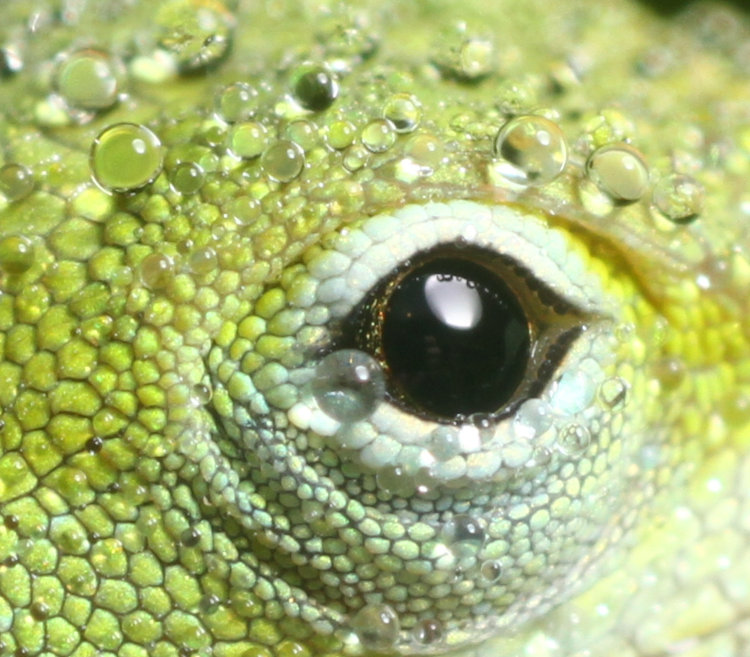
That – is going to be a print soon. And you can clearly see the benefit of a round softbox diffuser, because it looks many times better than having rectangular light reflections on all of those surfaces. But yeah, credit to the luck of having so many dewdrops right there on the edge of the eye.
Well, I’ll take a little credit for being steady enough to nail focus, and creating the macro flash rig, and knowing how to use lens reversing, and managing to lean out over the grasses to get a good angle without disturbing them, and finding the minuscule anole in the first place, and getting my butt wet just to be down there, and…



















































